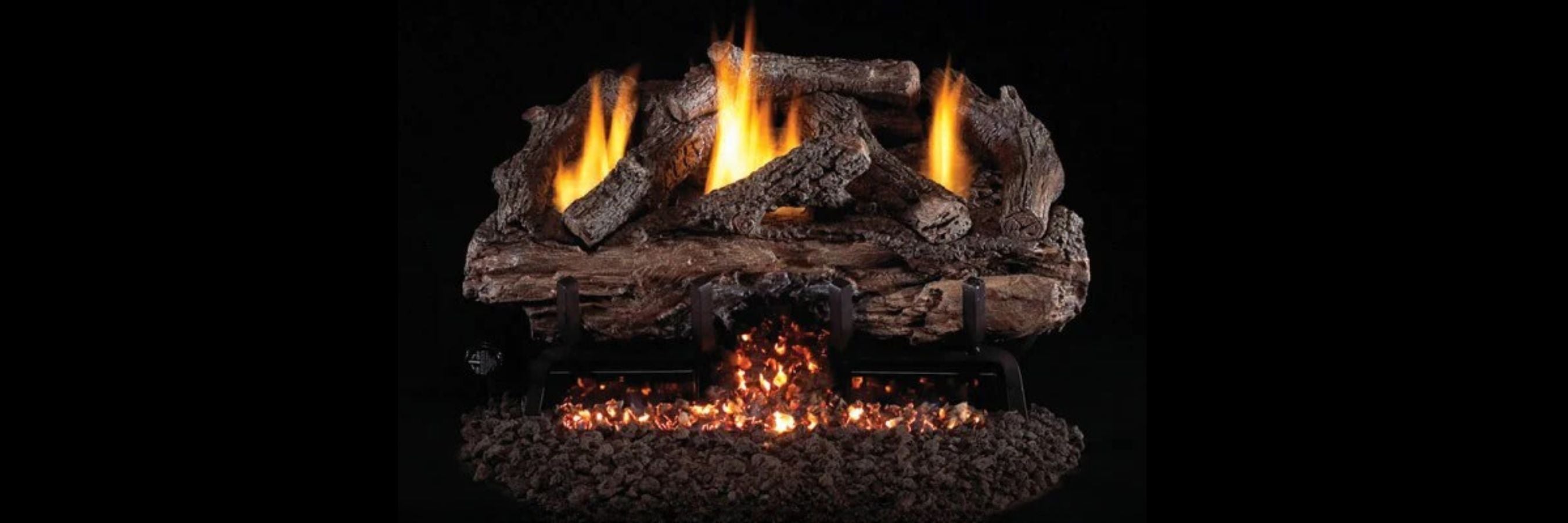
Vented vs. Vent Free Gas Logs. What's the difference?
Josh RowellIf you have been reading about the various types of gas logs you have undoubtedly been reading about "vent-free" and "vented" gas logs. Vent-Free gas logs are perfect for those who want the most efficiency and are the only option for those with vent-free fireboxes. Vented gas logs are best for those looking for the most realistic look and largest flame. Vented gas logs burn more gas to achieve this look and they are for decorative purposes only (meaning little to no heat output, except for new radiant heat sets). Like everything, vent-free gas logs and vented gas logs each have their pros and cons.
Vent Free Gas Log Pros:
- 99.9% clean and efficient, heating up to 1200 sq. ft.
- Work when the power is out
- Easy to install a new vent-free fireplace with no venting/piping required
- Low BTU burn (Average of 36,000 BTU)
- Remote Control available or included on most units
- Recent advancements have greatly improved appearances and have added ember beds
Vent Free Gas Log Cons:
- Require an initial burn-off period to reduce smells and odors (READ MORE BELOW)
- Can have ongoing odor issues (READ MORE BELOW)
- Require stringent and specific mantle heights and clearances from combustibles (download our measuring guide here)
- Logs cannot be moved (doing so will create carbon monoxide and suit)
- More controlled, less realistic flame and burn compared to vented gas logs
- Cannot be installed in bedrooms (or smaller rooms)
Vent-free gas logs and odor issues
One of the most often heard complaints when it comes to vent-free gas logs is odor issues. ALL vent-free gas logs will need to have an initial "burn-off" of 8 hours on high. This will allow the factory paint and dust build-up from installation to burn off. It is HIGHLY recommended to have an open or door to the room/home when doing this.
After the burn-off period, please keep in mind that vent-free gas logs work by pulling air in from the room, mixing it with gas, and then burning the mixture completely clean, leaving only a bit of water vapor as a bi-product. Therefore, any bi-products in the air such as hair spray, dog hair, paint fumes, new carpet, etc. will be pulled into the fireplace and burned. Seasonal dust build-up can also present an odor issue when burning your gas logs for the first time each season.
In 2015, Casual Furniture World stopped selling ceramic-fiber vent-free gas logs as we found them associated with more odor issues than concrete or refractory logs.
Vented Gas Logs Pros:
- Most Realistic Look
- Tallest and most yellow flame
- In most cases - logs can be rearranged to personal likes
- No odor issues as the flu/damper to the fireplace will be open
- Remote Control available on most units
Vented Gas Log Cons
- Inefficient, roughly burning twice as much gas as vent-free gas logs with little to no heat output ***UPDATE: See the Carolina Campfire for new radiant heat technology!***
- Inefficient due to the flu/damper required to be open, at all times, by law(this can be overcome with a set of glass doors)
When considering what type of gas fireplace to choose, consider the pros and cons of a vent-free set of gas logs. If you have a masonry fireplace, and want the to turn your old drafty fireplace into an efficient heat source, you may want to consider a Direct-Vent Insert.
Need more help? The professionals at Casual Furniture World and our "live-burn" showrooms are here to help you with your choice and selection!
